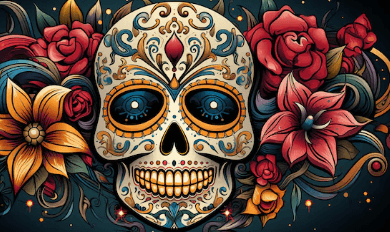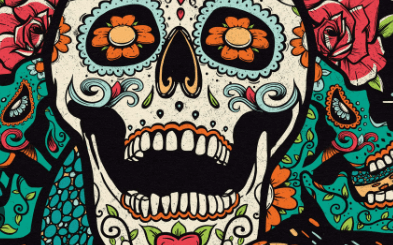Art:3r936r0hfc4= Sugar Skulls

The Art:3r936r0hfc4= Sugar Skulls, a vibrant symbol of Mexico’s Day of the Dead, serves as a fascinating intersection of artistic expression and cultural identity. Originating from pre-Hispanic practices, these ornate creations not only commemorate the deceased but also reflect the intricate craftsmanship of various regions. As contemporary artists reinterpret this tradition, the evolving dialogue surrounding sugar skulls raises compelling questions about their role in addressing themes of mortality and connection. What implications do these artistic transformations hold for our understanding of cultural heritage and personal expression in today’s society?
History of Art:3r936r0hfc4= Sugar Skulls
The tradition of Art:3r936r0hfc4= Sugar Skulls, or “calaveras de azúcar,” is deeply rooted in the cultural practices surrounding the Day of the Dead (Día de los Muertos) in Mexico, a celebration that honors deceased loved ones.
Originating from pre-Hispanic rituals, these vibrant confections utilize intricate sugar recipes, embodying a blend of traditional practices and artistic expression, reflecting both remembrance and the continuity of life.

Cultural Significance and Symbolism
While sugar skulls are often celebrated for their vibrant colors and intricate designs, their cultural significance extends far beyond mere aesthetics.
They embody tradition preservation, serving as ritual offerings during the Día de los Muertos. These symbolic representations of deceased loved ones foster connections between the living and the dead, allowing communities to honor their heritage while embracing the cycle of life and death.
Artistic Techniques and Styles
Numerous artistic techniques and styles contribute to the distinctive appearance of sugar skulls, each reflecting regional variations and individual creativity.
Vivid color palettes, often comprising bright hues, enhance their visual appeal, while intricate decorative patterns—ranging from floral motifs to geometric shapes—add depth and meaning.
These elements not only showcase the artisans’ skills but also celebrate cultural heritage, inviting personal expression within a shared tradition.
Art:3r936r0hfc4= Sugar Skulls in Contemporary Art
In recent years, an increasing number of contemporary artists have embraced sugar skulls as a powerful symbol of cultural identity and artistic expression.
Modern interpretations of sugar skulls often challenge traditional aesthetics, merging vibrant colors and intricate designs with contemporary themes.
This evolution not only highlights their cultural significance but also invites dialogue on mortality, identity, and the celebration of life within diverse artistic landscapes.
Read More Art:0kfr47om0yk= Emo Pfp
Conclusion
The evolution of Art:3r936r0hfc4= Sugar Skulls encapsulates a rich tapestry of cultural heritage, merging ancient traditions with contemporary artistic expression. Vibrant colors dance across their surfaces, each intricate design whispering stories of remembrance and identity. As these confections transcend mere decoration, they become a bridge connecting past and present, inviting contemplation on the fragility of life. Thus, sugar skulls stand not only as symbols of mortality but as enduring representations of community, creativity, and the celebration of existence.





